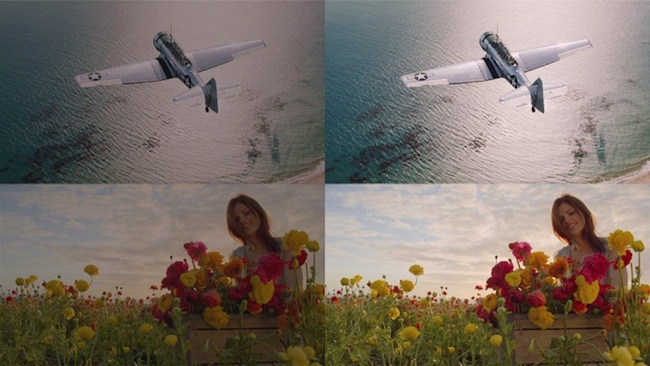
 Simulated effects of Dolby Vision
Simulated effects of Dolby Vision
HDR imaging has been one of the sleeper stories of technological advancement over the past couple of years, but with the International Telecoms Union (ITU) looking to fold it into a future Ultra HD spec and the chance of some major film franchises — think Star Wars and The Hobbit — mastering in it, it’s time may finally have come.
Of course, the ITU has already defined two flavours of Ultra HD — effectively 4K and 8K — so this would need a further iteration of the 4K spec, with a timeline guesstimated at around 2017 or 2018.
Rather than an increased colour gamut per se, the debate over whether it is going to be something that consumers actively want seems to be centring around screen brightness (which Dolby reckons at up to 4,000 cd/m2 brightness is 40 times more than a conventional TV). This splits firmly into two camps, NHK, for instance, theorising that the public may find brighter screens unattractive, with others suggesting that they add more to perceived image quality than any increase in resolution.
Regardless of the arguments Dolby is trying to grab the high ground and has introduced a proposed HDR format, called Dolby Vision, that already has CE support from the likes of Sharp.
Its roots are interesting and all about nits. Dolby argues that back in the day a CRT display had an average peak brightness of 100 nits, and this is still the reference level despite the fact that modern displays range up to 500 nits. All of which is impressive until you realise that the sun at noon accounts for 1.6bn nits while starlight alone is way below one and the human eye is comfortable with most of that range. Meanwhile the company has built a prototype display that it uses for demos etc with an output of 4000 nits.
It’s not the only one out there either —the ITU is also planning to perform evaluations on HDR proposals from the BBC, Philips, and Technicolor, Dolby, and the BBC —but it has just received a significant boost with the news that SGO is working on supporting the format with its high-end finishing tool, Mistika.
Park Road Post
Peter Jackson’s Park Road Post has been a rather high-profile development partner of SGO, all of which helped contribute to the high framerate capabilities in the software used throughout The Hobbit trilogy. And given that Dolby has revealed that it expects somewhere in the region of 25 films to opt for a Dolby Vision finish by the end of the year, you can imagine that The Hobbit: The Battle of Five Armies might well be among them.
And with Mistika also in situ at JJ Adams’ post house Bad Robot Productions, Star Wars: Episode VII might also conceivably go the same route.
Filmlight’s Baselight grader already supports the format too, but to date the rather profound missing link in the production chain has been HDR reference monitors so that colorists can see the expanded gamut, but these are in prototype too and presumably will also come in a 4K flavour.
The other missing link are digital projectors with enough candle-grunt to throw the pictures at a cinema screen, leading this to be that rare beast: a technology for film that impacts the domestic market before the cinema one. It will be interesting to see whether the public shows a desire for more brightness or more resolution, or indeed whether its the combination of both — thought the Dolby Vision enhancement layer adds about 20% to data throughput which might make 4K signals struggle under current conditions —that makes upgrading domestic equipment a no-brainer. Nit picking if you will :-)
Tags: Technology


Comments